Several types of modules can be used for inserting the coral with substrate. For a reef however, it is important that a wide variety of modules (with different sizes and shapes of holes and crevices) are used to ensure that all types of marine life find their own spot in it, whether depending on refuge and shelter from predators and current as places lay their eggs. The greater the variety of size, density, and orientation of the crevices the better. they will shelter a wider variety of creatures. Crevices can be created in a number of ways, usually by leaving holes in fabricated modules or attaching materials such as broken pipes to the modules to create holes. Whole or broken pantiles, bottles, cooking pots, buckets, flower pots, and bricks are just some of the many items that can be "glued" onto modules to create interesting crevices. It is also important to attach natural or synthetic fibres to the reef modules. They make a very attractive substrate for the smallest of creatures, and are ideal places for certain fish to lay their eggs.
Module types[edit | edit source]
Modules usable with coral plug adaptors[edit | edit source]
The following modules/artificial types are methods we are familiar with, and are confident will meet the requirements for using the methods present in this manual, provided coral adapter plug receptors are present. There may be other designs we have not reviewed and we will be happy to review any design you might be interested in using to determine if, in our opinion, it is suitable for your particular project.
Naturally, we have the most experience with projects using Reef Balls as the module, but it is possible to use other designs provided they are stable (will not move during storms), and can be fitted with coral adapter plugs (if your project involves coral transplant), designed without iron rebar, and made from materials that will last long enough to accomplish your project goals.This means with materials that will not contaminate the area if they are disturbed or break down: synthetic materials and plastics release chemicals under the combined action of UV light of the sun and salt water; for example tyres should not be used. Wood is also best not used as wood as it can be quite harmful to reefs. The main danger is that wood moves around in storms and can it can do damage natural reefs, and there are many other issues such as the nitrates and ammonia given off by wood as it decays. Best are stones, cleaned and unpainted iron, ...


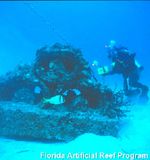

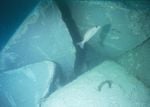

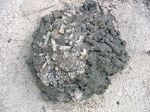
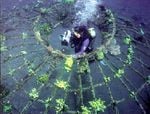
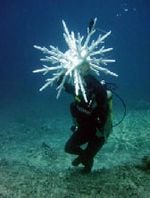
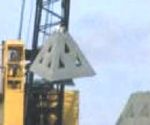
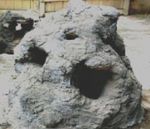

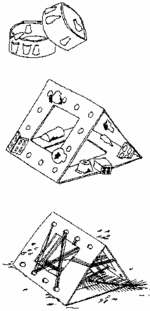

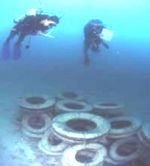
- Reef Balls (several sizes, and styles)
- DERM Modules (not for sand only substrates)
- Natural Limestone Boulder Modules: Natural boulders can be drilled to accept coral adapter plugs for coral rehabilitation projects. From our experience we recommend that boulders be at least 3 tons, and be deployed in a stable configuration, in order to prevent shifting in storms.
- Poured Concrete Seawalls: Note that coral adapter plug holes can be drilled into seawalls, or added during construction. When using this method, ensure that all corals are planted below the coral biological tide line.
- Solid Concrete Tetrahedrons or Geometrical Pre-cast Modules: Solid blocks do not create as much void space as hollow designs, but if deployed properly, can be extremely stable. Geometrical modules come in a wide variety of shapes and sizes (hollow squares, boxes, pyramids, ...). In general, these designs can be used as long as they are stable and the design does not require iron rebar for integrity. Modules such as these can be pre-cast with coral adapter plugs, or they can be drilled in after deployment. Also, DIY tetrahedrons can be made.
- Pipes and X-blocks: these are another possibility and can also be made at do-it-yourself manner.
- Reef Forms :Reef Forms are large blobs of concrete cast into a mold made of sand and affixed with coral adapter plugs. Reef Forms are inexpensive to make and deploy, but do not provide as much EPVS as hollow modules. The Reef Ball Foundation began using Reef Forms as a way of putting concrete leftover from casting Reef Balls to good use. In order to be safe for deployment in areas with natural or planted corals, these structures must be heavy enough to be stable, and must be deployed in areas where they will not subside.
Module Types Requiring Alternate Methods[edit | edit source]
The following modules/artificial reef types are not fully compatible with the coral plugs method. These modules may be suitable for ‘fish only’ projects, or may be used with corals using other coral rehabilitation methods. If, in working through the manual to this point, you feel that the goals of your project are best accomplished using one of these methods, we recommend that you contact the manufacturer regarding their specific procedures for siting, stabilizing, and planting corals.
- Biorock ReefsTM: BiorocksTM are constructed using accretion technology, and are not directly compatible with the coral adapter plug method described in this manual. However, Biorocks can be used very effectively to create coral nurseries and as a coral fragment generator for second generation brood stock. This method is best suited toward short term coral-only focused projects, such as research, coral farming and coral breeding. While it has been suggested that a metal cage could be placed inside a Reef Ball or other similar concrete module at the time of casting to combine the benefits of both systems, this procedure has not yet been formally tested.
- Eco-reefsTM: Eco-ReefTM modules are built from ceramic molds and designed to break down over time. Therefore, these modules would be compatible with some basing corals, but not with non basing species. At this time, Eco-Reef TMModules are not compatible with the coral adapter plug method used in this manual, but these modules are compatible with the Zip tie method.
- Concrete artificial reef modules designed for ‘fish only’ projects: Many hollow concrete structures are designed primarily for ‘fish only’ rehabilitation projects. These modules typically use less concrete, and depend upon a metal support structure for integrity. This allows for a lighter module which may be less expensive, or easier to deploy. While structures of this type have been shown to be effective for projects focused around the generation of EPVS for fish, modules with a metal support structure are not recommended for use with the coral propagation methods discussed in this manual. For more information regarding the usage and functionality of these modules, we recommend that you contact the manufacturer. Modules of these types are not recommended for coral rehabilitation techniques discussed in this manual because they utilize support frames made from metal, which can reduce the long term durability and stability of the module.
- Pyramid Modules made from steel and tires or other materials: ‘Pyramid Reefs’, ‘Grouper GhettosTM‘ and other similar reefs types are designed for fish attraction, and intended specifically for fish only projects. Pyramid type artificial reef modules are made with steel frames and using tires or other materials of opportunity to provide additional habitat complexity. They are not suitable for projects intended on the rehabilitation of corals or fouling communities, as neither steel nor rubber is an effective substrate for coral basing. These structures do have the advantage of utilizing materials of opportunity in a constructive fashion, but this comes at the cost of some versatility.
- Reefs made from tires: Throughout this manual, we have tried extremely hard to maintain objectivity with respect to methods and techniques other than our own. Almost all artificial reef creation methods have meritorious application and, if deployed and monitored properly, generally bring about more benefit than harm. However, we feel the need to strongly caution the use of artificial reefs made from tires. While at first, it may seem a very attractive and inexpensive option for generating additional habitat complexity and EPVS while also making constructive use of a waste product which is very difficult to dispose of otherwise, there are many potential risks associated with reefs made from tires. Tires have a low negative buoyancy, which makes their stability uncertain. Tire reefs are typically held together with chains, which weaken rapidly when exposed to salt water. These factors combine to allowtires to break free from the reef over time, and these loose tires can travel large distances during storms or other high turbulence events, doing a great deal of damage to natural ecosystems in the process. Furthermore, rubber is too flexible to be a suitable basing material for corals, and used tires often contain hazardous chemicals and oil, which can leach into the water and sediment around the reef, and can be toxic to fish and other marine life. Especially in light of recent catastrophic failures of tire based reefs in Florida and around the world, we feel that in this case, the potential risks outweigh the benefits. Some artificial reef projects utilize tires as a base substrate material.
Module add-ons[edit | edit source]


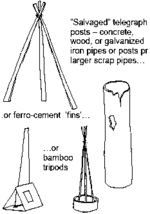
Several add-ons can be placed on modules in order to increase their height and ensure that a well-balanced ecosystem is created in/near the newly established modules. These added height can be required as it makes it easier for roving predatory fish to locate the reef, thereby increasing further the biodiversity of the reef. The reef will act like a beacon, and in times of sediment disturbances the highest objects may still show above the sediment cloud or project eddies and disturbances further afield.
Height can be achieved in a number of ways, for example by using salvaged telegraph posts or pipes, or poles made from concrete, wood, or galvanised iron. You could also make ferrocement "fins" or bamboo or wooden tripods. If none of those materials are available you can create height cheaply using air too. Floats or plastic containers full of air or other buoyant items can be tied with rope to modules. Other small items can be tied along the length of the rope to provide crevices and surfaces on which biomass can begin to accumulate and grow.
Module construction[edit | edit source]
Needs to be added from REEF BALL MOLD SYSTEMS TRAINING MANUAL
Disclaimer[edit | edit source]
This information was Reef Ball's Draftguide document.